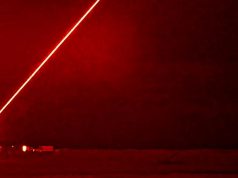After reaching a deal on the cooperation on a future fighter engine demonstrator in December last year, the United Kingdom and Japan on Tuesday signed a letter of arrangement (LOA) to jointly conduct cooperative research on fighter jet sensors.
The universal radio frequency sensor technology, known as “JAGUAR”, could enable the armed forces to better detect future threats from air, land and sea, quickly and accurately locating targets and denying surveillance technology operated by adversaries.
With joint work on the project scheduled to start in April, designing, building and evaluating the JAGUAR system is expected to take around five years.
It will involve input from Leonardo UK and Japanese industry, with two demonstrators set to be built within the project, one in each country.
“We are proud to work ever closer with our partners in Japan to ensure both our armed forces remain at the forefront of military innovation,” UK defense procurement minister Jeremy Quin said.
“This crucial relationship will see us acquire truly advanced technology to protect our nations for decades to come whilst creating significant investment and highly-skilled jobs in the UK and Japan.”
This cooperative research comes after the UK and Japan signed a memorandum of cooperation (MoC) in December last year, enabling both nations to pursue joint technologies. In December, the two countries also announced an intention to develop a future fighter jet engine demonstrator as part of their partnership.
“Japan has a strong and growing combat air industry which is a natural fit for Leonardo. Under JAGUAR, our highly-skilled scientists and engineers based across the UK will work with their Japanese counterparts to advance technology that will benefit both of our nation’s future combat air endeavors,” Leonardo UK chair and CEO Norman Bone said.
Both The UK and Japan are working on next-generation fighters after both purchased the F-35 fifth-generation aircraft built by Lockheed Martin. The UK’s “Tempest” future combat air system is expected to enter service from the mid-2030s, and will combine a core aircraft with a whole network of capabilities such as uncrewed aircraft and advanced data systems.
Japan future F-X fighter is envisioned as a replacement for the F-2 multirole fighter and will will support manned unmanned teaming with a radar capable of serving as a directed-energy weapon using microwaves for missile defense. Its internal weapons bay is expected to be capable of fitting six weapons, similarly to the US Air Force’s F-22 Raptor.



























